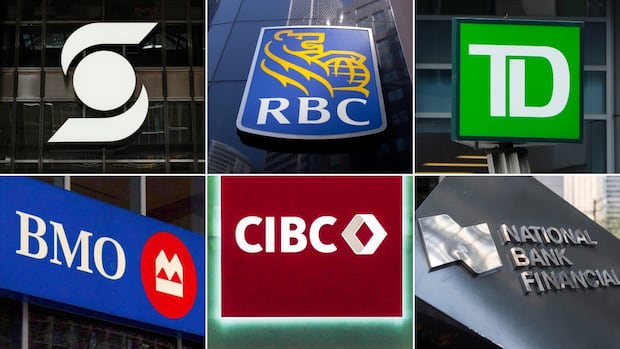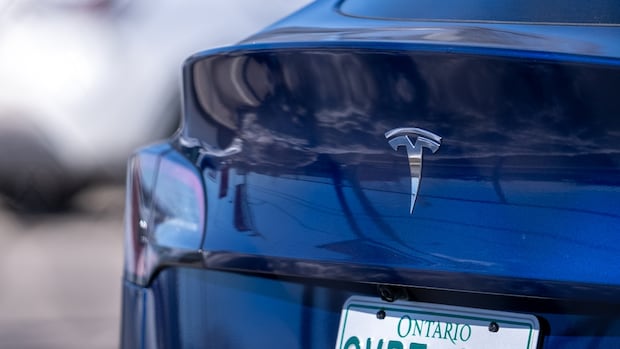A new report says Canada's big banks financed about $200 billion in fossil fuel investments last year, compared with about $104 billion to low-carbon energy.
The report by energy transition research firm BloombergNEF focuses on the ratio of global bank funding going to oil, gas and coal projects, compared with low-carbon investments like wind, solar and electrical grids, as a way to see how much financial institutions are helping or hindering the transition.
Canada lags global average for financing renewablesBloombergNEF found that globally, the ratio for banks was 89 cents going toward low-carbon options for every dollar to fossil fuels in 2024 — roughly the same rate as a year earlier.
"The ratio is not rising at the pace needed to meet global climate goals," lead author Trina White said in the report.
The ratio for Canada's Big Six banks was 0.61 to 1 last year, worsening from 0.67 to 1 in 2023. However, the picture was mixed, with some seeing a higher ratio of funding to renewables and others slipping.
Banks finance a range of projects across sectors, Canadian Bankers Association spokesperson Nathalie Bergeron said in a statement. "Banks in Canada remain committed to strategically supporting clients in their transition efforts as part of Canada's strategy to address climate change."
WATCH | How to keep your investments fossil fuel free: Investors may be keen to put their money in greener portfolios, but a lack of standardization in the financial industry can make it difficult. Nisha Patel explains how to tell if those investments are really green.Excluding National Bank — an outlier among the six major lenders as the only one to fund more renewables than fossil fuels — the ratio worked out to 0.49 to 1 in 2024, compared with 0.47 to 1 a year earlier.
Last year, RBC committed to release its own calculated energy supply ratio, but said in April it would not be disclosing it publicly, citing new greenwashing laws. Scotiabank has committed to releasing its findings next year.
Ranking the Big 5RBC — which has also committed to provide $35 billion in low-carbon financing by 2030 — fared the best among the Big Five banks, with a ratio of 0.61 to 1.
RBC spokesperson Sarah Kennedy said the bank's goal is to be the bank of choice for the transition to a low-carbon and resilient economy.
"Our strategy is to support our clients across sectors in the transition, while focusing first on the areas that we believe present the greatest opportunities and risks."
Kennedy did not clarify if or when RBC plans to publicly release its own clean-energy finance ratio. Other major
banks, including Citi and JPMorgan Chase, have already publicly released their first ratio reports.
TD Bank Group had the worst ratio of its Canadian banking peers, with 31 cents going to low-carbon energy for every dollar directed at fossil fuels. The bank did not respond to a request for comment.
Richard Brooks, the climate finance program director at Stand.earth, said the lack of overall progress from a year earlier
shows voluntary action from banks — including their commitments to net-zero financed emissions by 2050 — isn't working.
"With the hottest year on record and fires still raging across many countries, we need governments to step in and regulate and legislate action by the banks," said Brooks in a statement.
"We need investors and customers who have been misled into believing the bank's net-zero commitments are real to litigate a change in behaviour."
Some banks are showing progress, he said, pointing to BNP Paribas, which has achieved a ratio of 2:1 in favour of low-carbon energy, as an example to follow.
Canada's big banks have set a target of net zero financed emissions by 2050.













